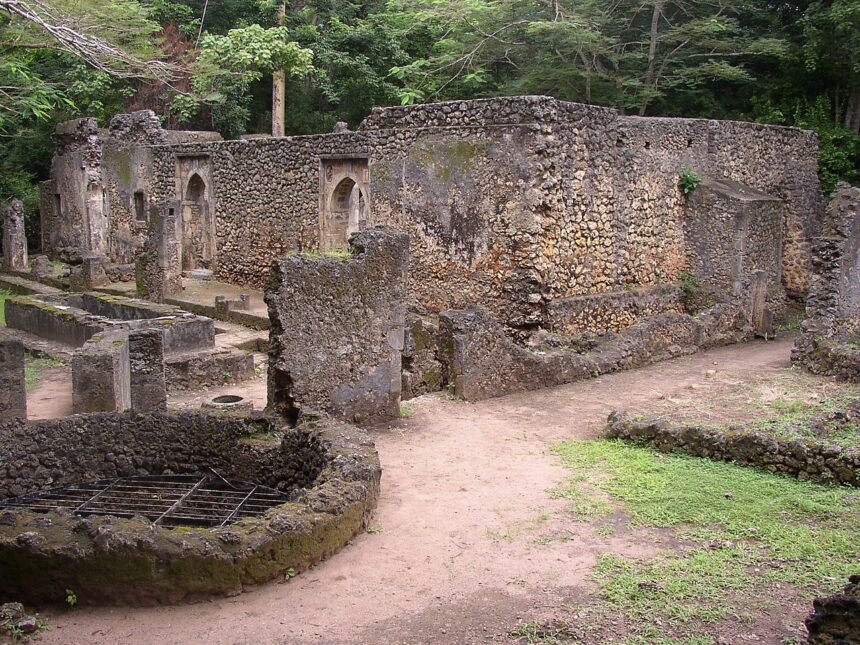Kenya, a country celebrated for its stunning natural beauty and rich cultural heritage, boasts an array of landmarks that attract visitors from around the globe. From ancient historical sites to breathtaking natural wonders, these landmarks offer a glimpse into Kenya’s diverse landscapes and vibrant history. Here’s a look at some of the most famous landmarks in Kenya:
1. Mount Kenya
Mount Kenya is the second-highest peak in Africa, standing at 5,199 meters (17,057 feet) above sea level. This majestic mountain, with its snow-capped peaks and rugged terrain, is a UNESCO World Heritage Site and a popular destination for hikers and climbers. The mountain is also of great cultural significance to the Kikuyu people, who regard it as a sacred site.
2. Masai Mara National Reserve
The Masai Mara National Reserve is renowned for its incredible wildlife and the annual Great Migration of wildebeest and zebras. Covering over 1,500 square kilometers, the reserve is home to the “Big Five”—lion, leopard, buffalo, elephant, and rhino—as well as a myriad of other species. Its vast savannahs and rich biodiversity make it one of Kenya’s most iconic safari destinations.
3. Nairobi National Park
Located just a short drive from Nairobi’s bustling city center, Nairobi National Park is a unique urban wildlife sanctuary. The park features a diverse range of animals, including lions, giraffes, rhinos, and zebras. Its proximity to the city offers a rare opportunity to experience wildlife and conservation efforts without leaving the urban area.
4. Lamu Island
Lamu Island, part of the Lamu Archipelago, is known for its well-preserved Swahili culture and historical architecture. A UNESCO World Heritage Site, Lamu Town features narrow streets, traditional coral stone houses, and vibrant markets. The island’s serene beaches and historic charm make it a popular destination for those seeking a tranquil escape.
5. Hell’s Gate National Park
Hell’s Gate National Park is distinguished by its dramatic landscapes, including geothermal hot springs, towering cliffs, and deep gorges. The park is named after a narrow break in the cliffs resembling a gateway to hell. It is known for its scenic hiking trails, rock climbing opportunities, and abundant wildlife, including giraffes, buffaloes, and various bird species.
6. Gedi Ruins
The Gedi Ruins are the remnants of an ancient Swahili town that was abandoned in the 17th century. Located near the Indian Ocean coast, the site includes ruins of mosques, houses, and a palace, offering a fascinating glimpse into the region’s history and architectural style. The Gedi Ruins are part of the Gedi National Monument and are an important archaeological site.
7. Karen Blixen Museum
The Karen Blixen Museum, located in Nairobi, was once the home of the famous Danish author Karen Blixen, best known for her book Out of Africa. The museum provides insights into Blixen’s life and work, as well as the history of the early European settlers in Kenya. The beautifully preserved house and gardens offer a glimpse into the colonial era.
8. Samburu National Reserve
Samburu National Reserve, situated in northern Kenya, is renowned for its unique wildlife and arid landscapes. The reserve is home to several species that are rarely found elsewhere, including the Somali ostrich, Grevy’s zebra, and the reticulated giraffe. Its rugged terrain and diverse ecosystems make it a compelling destination for wildlife enthusiasts.
Kenya’s landmarks reflect the country’s rich tapestry of natural beauty, cultural heritage, and historical significance. From the towering peaks of Mount Kenya to the ancient ruins of Gedi, these sites offer visitors an opportunity to explore and appreciate the diverse facets of Kenya’s heritage. Each landmark tells a story of Kenya’s past and present, making them integral to understanding the country’s unique identity.














